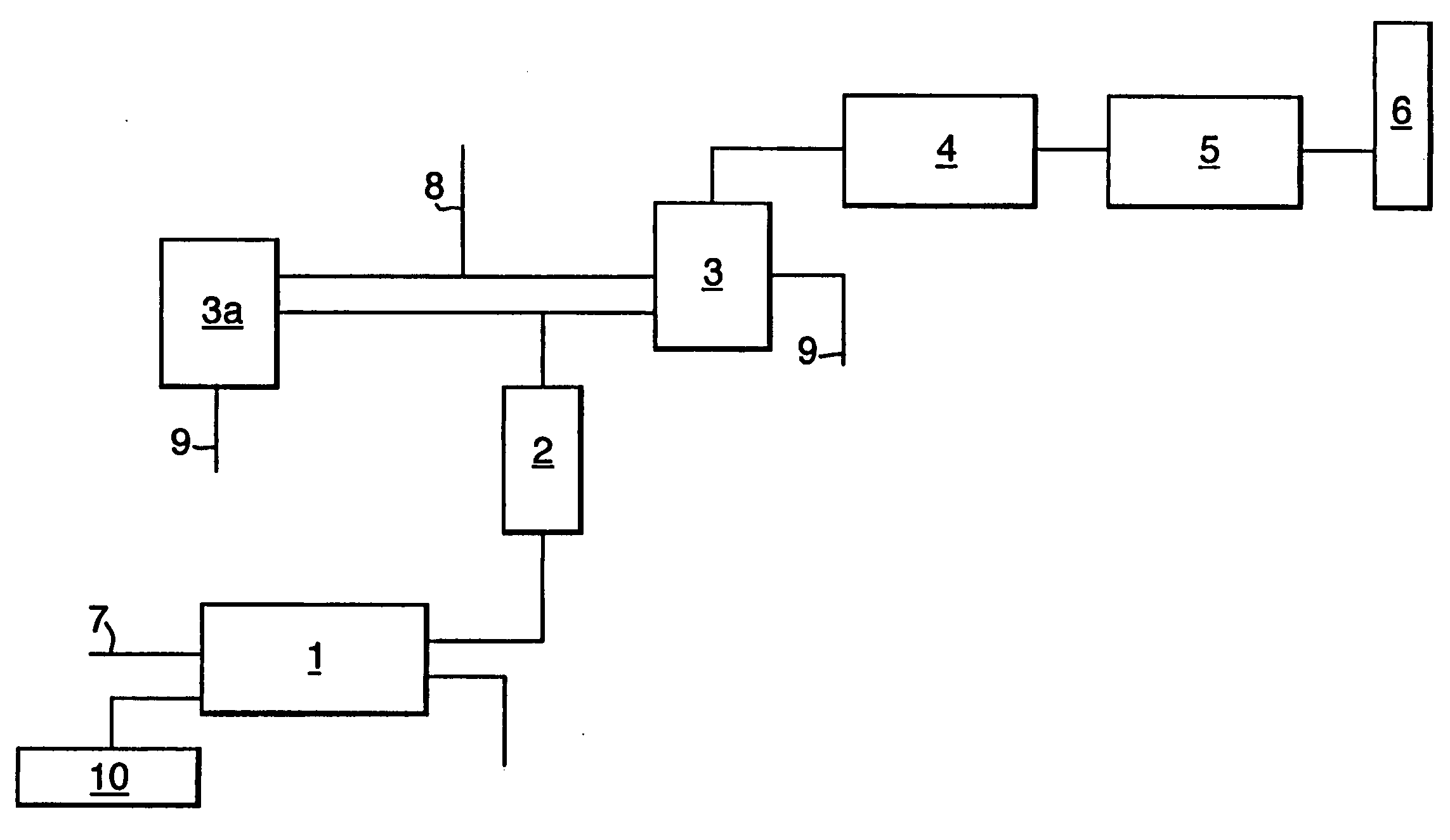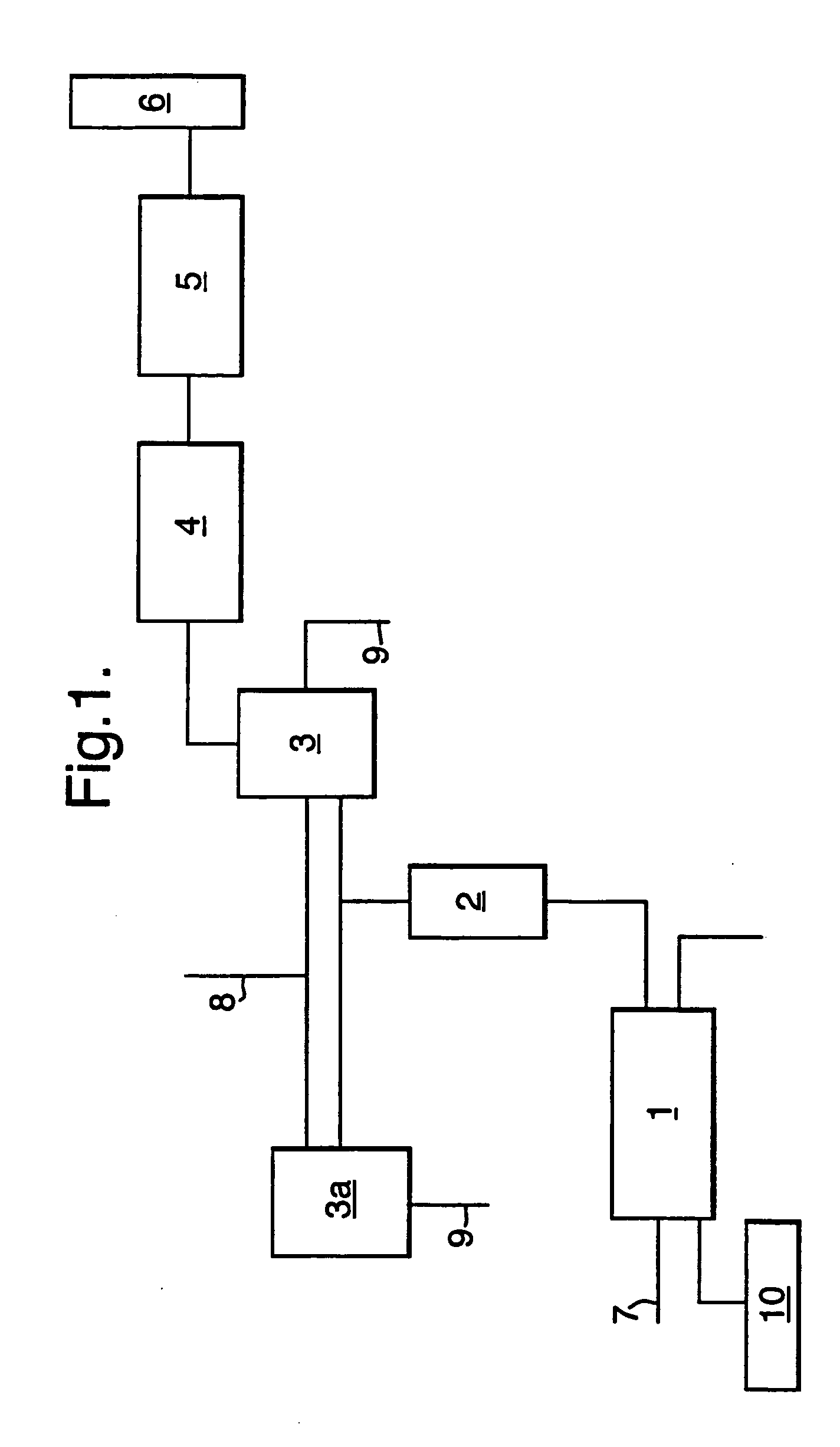Method and process for co-combustion in a waste to-energy facility
- Summary
- Abstract
- Description
- Claims
- Application Information
AI Technical Summary
Benefits of technology
Problems solved by technology
Method used
Image
Examples
Embodiment Construction
[0051] One embodiment of the co-combustion process, which is the possibility of merging hot gas evolved from the clinker cooling process into the mass burn system for Municipal Solid Waste (MSW) and industrial waste, is described below with reference to the FIGURE.
[0052] As shown by stream #7, solid waste can be fed into an incineration system comprising a rotary dryer and incinerator where drying and combustion of the solid waste can occur. A controlled amount of hot gas input typically at a temperature of about 240° C. from the cement grate cooler system can be routed into the mass burn unit as shown by stream #10.
[0053] The flue gas from the drying and incineration system (#1) can be further heated up in a Secondary Combustion Chamber (#2). The target temperature in the Secondary Combustion Chamber can be as high as 1200° C., generally by using additional fuel (coal / natural gas / oil), and this high temperature in combination with intensive turbulence and long retention time can ...
PUM
| Property | Measurement | Unit |
|---|---|---|
| Temperature | aaaaa | aaaaa |
| Temperature | aaaaa | aaaaa |
| Temperature | aaaaa | aaaaa |
Abstract
Description
Claims
Application Information
 Login to View More
Login to View More - R&D
- Intellectual Property
- Life Sciences
- Materials
- Tech Scout
- Unparalleled Data Quality
- Higher Quality Content
- 60% Fewer Hallucinations
Browse by: Latest US Patents, China's latest patents, Technical Efficacy Thesaurus, Application Domain, Technology Topic, Popular Technical Reports.
© 2025 PatSnap. All rights reserved.Legal|Privacy policy|Modern Slavery Act Transparency Statement|Sitemap|About US| Contact US: help@patsnap.com


